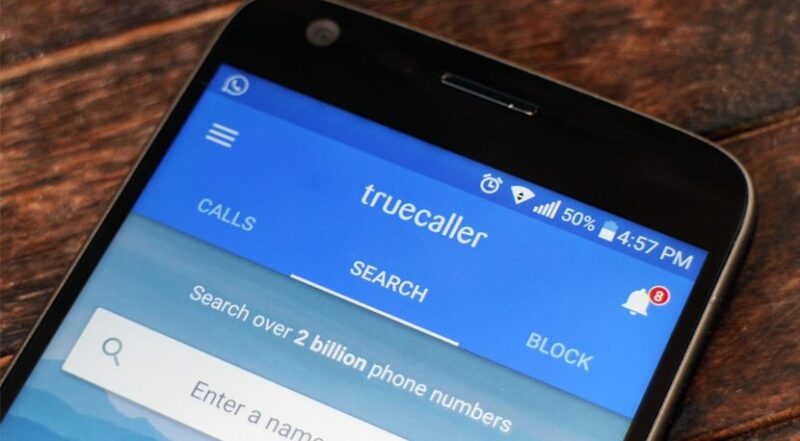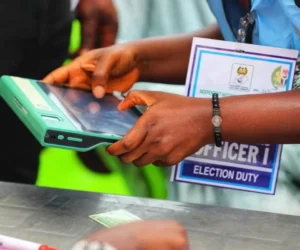Caller ID company Truecaller has expanded its service beyond just caller identification as it is now helping users understand not only who is reaching out, but the intent behind every call. The company disclosed this in a statement seen by Technext.
According to the company, which recently celebrated 450 million global active users, it is now providing deeper contextual insights using AI on incoming calls received by its users, going way beyond showing just the caller’s name. This includes AI summaries of user comments as well.
From flagging potential fraud and identifying likely spam to suggesting relevant business categories, this information is delivered instantly, powered by advanced AI classification models and continuously enriched by millions of daily reports from its highly engaged user community.

This real-time intelligence not only enhances user trust and safety but also reinforces Truecaller’s leadership in the next generation of caller identification technology. While the company also offers a Verified Business badge for official brand identities, the majority of contextual insights shown to users are generated dynamically by AI, requiring no manual labelling or business registration.
While basic caller ID services provided by telecom operators have traditionally offered little more than a name (when available) and sometimes a simple spam tag, Truecaller, on the other hand, leverages AI and real-time insights, making it a far more intelligent layer of protection.
Speaking about the development, Global CEO Rishit Jhunjhunwala said the idea behind providing the intent of callers is simply to give users clarity.
“People hesitate to answer unknown calls because they lack context and in today’s world, context is everything. Truecaller was built to solve this: not just to identify who’s calling, but to help you understand why. Is it someone from your network, a delivery, a business or a scam? Our AI uses real-time data and contextual signals to give you clarity the moment your phone rings, turning uncertainty into informed choice. Knowing ‘who’ is calling is only part of the story,” Jhunjhunwala said.
Truecaller is incorporating AI to go beyond caller ID
Launched in Stockholm, Sweden, in 2009, Truecaller has since become an essential part of everyday communication for over 450 million active users. The company has since recorded more than 1 billion downloads since its launch, and close to 56 billion unwanted calls have been identified and blocked in 2024 alone.
The company said its Caller ID is powered by a dynamic, AI-driven engine that interprets billions of signals from calls, messages, and user feedback across the globe, every single day. Unlike traditional systems that depend on static databases or delayed telecom updates, its system delivers real-time intelligence that evolves with user behaviour, communication patterns, and emerging global spam and fraud threats.


This continuous learning loop ensures that users are always equipped with the most relevant, up-to-date context, transforming the way users understand and respond to incoming calls.
This means beyond just identifying a number, the platform can indicate whether the caller is a known fraudster or part of a scam network and tell users if the number is “likely a business” or “likely important”, even if there is not enough community feedback.
It can also classify the type of business — for example, Delivery, Customer Support, or Insurance, while also alerting users about suspicious behaviour, even before the community has widely reported that number. The platform can also provide a single-line AI summary of hundreds of user comments while the phone is still ringing.
The company also stated that its service is designed for a world where threats evolve rapidly, with the scale and sophistication of phone scams increasing rapidly. Truecaller alone identified more than 56 billion spam and fraud calls in 2024. According to the Global Anti‑Scam Alliance and Feedzai, worldwide losses from scams topped an estimated $1.03 trillion in 2024.
With phone calls and messaging among the most common fraud methods, this highlights the growing urgency of real-time caller intelligence and protection.
Truecaller says its edge lies in its adaptive AI, which detects emerging fraud patterns in real time and learns from them across regions, languages, and formats. A number flagged for impersonation in one country can be proactively labelled elsewhere, thanks to shared intelligence and behavioural modelling. Built on global data but tuned for local context, the platform ensures nuanced, accurate protection and sustained user trust.


The company also said its global scale is its greatest strength, with hundreds of millions of users across over 190 countries. The platform benefits from an immense stream of real-time, community-driven feedback, enabling its AI to detect threats like fraud, spoofing, and robocalls faster and more accurately than traditional systems.
In a time of rising digital deception, Truecaller acts as a frontline defence: AI-powered, human-informed, and built around trust. As it continues to evolve, its mission remains clear: to make communication smarter, safer, and seamlessly contextual.
See also: How payment switches power cashless transactions in Nigeria








